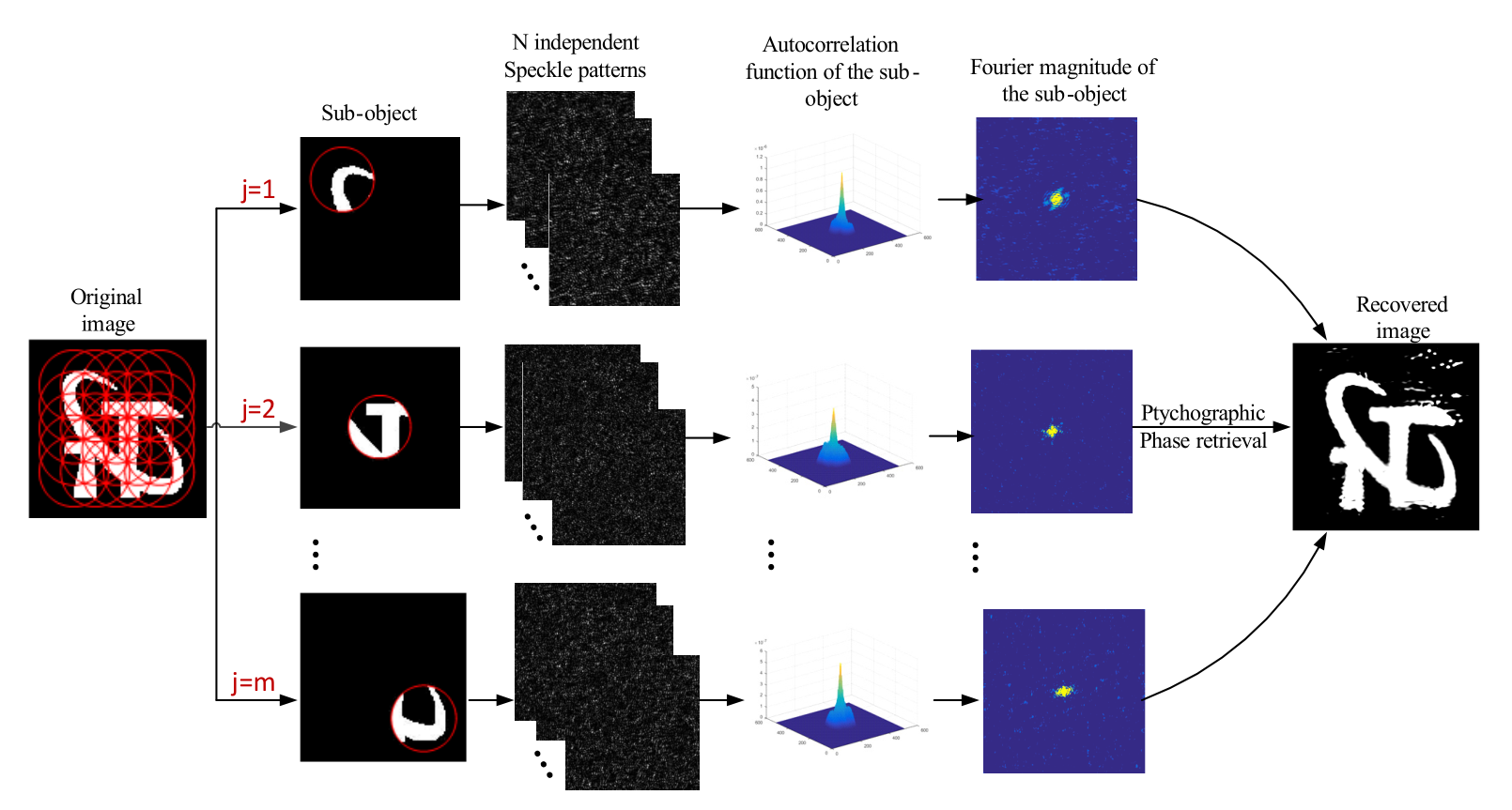The long-range space targets imaging, such as middle-and-high altitude Earth satellites and space debris above 10,000 km, is important for space scientific research. To obtain clear images, the resolution of the imaging system is required to reach the milliarcsecond (mas) scale.
However, it is difficult for traditional wavefront imaging to satisfy this requirement for telescope apertures limitations. The unreliability of traditional phase retrieval algorithms in imaging correlography has hindered their development.
Recently, a research team led by Prof. Dr. SONG Zongxi from Xi'an Institute of Optics and Precision Mechanics (XIOPM) of the Chinese Academy of Sciences (CAS) proposes a flexible optimization framework with imaging correlography and ptychography together to reconstruct the object rapidly and reliably within a few iterations, which can achieve four-fold resolution gains with one-sixth of the measurements. The result was published in APPLIED SCIENCES. (https://doi.org/10.3390/app9204377)
They proposed the correlography and ptychography are joined together to solve the problem of inaccurate phase recovery in the imaging correlography. The Fourier magnitude is estimated for ptychographic reconstruction using imaging correlography.
In addition, novel image space denoising regularization is plugged into the loss function to reduce the effects of input noise and improve the perceptual quality of the recovered image.
A series of experiments demonstrate that the reconstruction results of the proposed imaging model are far superior to the conventional imaging correlography on both visual and quantitative metrics. Therefore, the proposed imaging technique is more suitable for long-range practical applications.
This research was funded by National High Technology Research and Development Program of China 863 Program (No. Y512171800) and Youth Innovation Promotion Association (No.1188000111).
Block diagram of the imaging correlography with ptychography. (Image by XIOPM)



